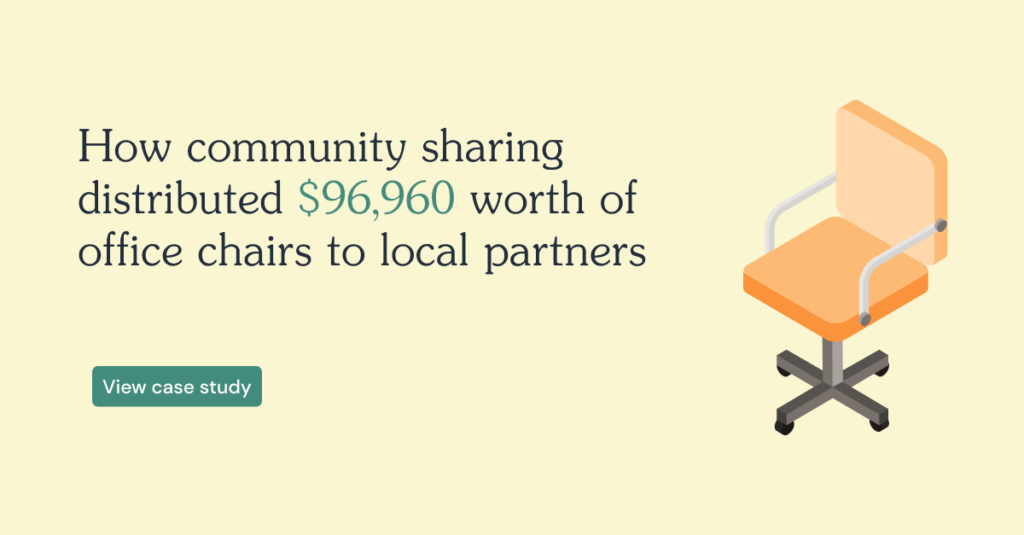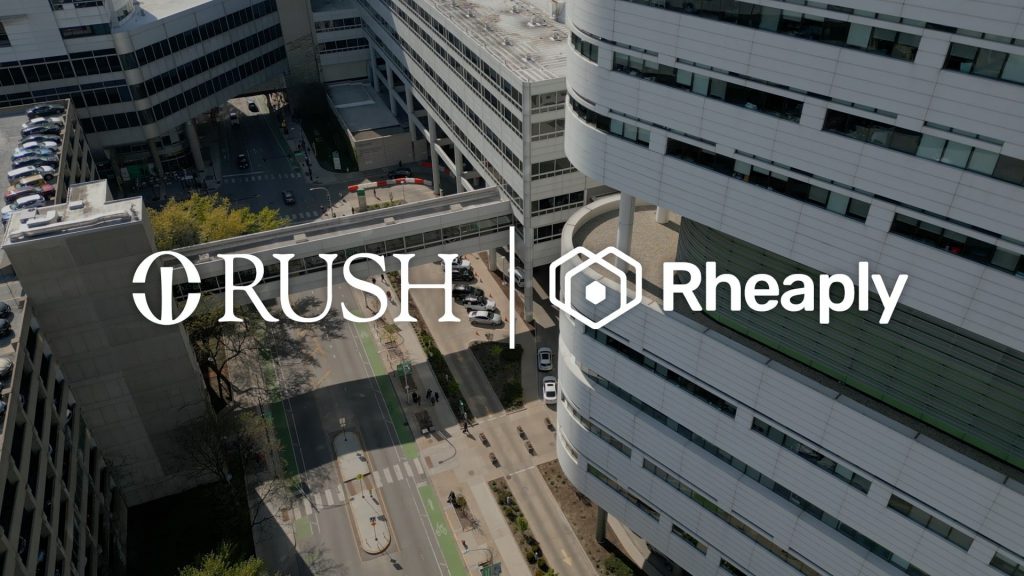Sustainable Cities
Rheaply Public makes cities the epicenter for sustainable reuse.
Sustainable Cities
In recent years, as the world continues to face environmental issues like climate change, rapid urbanization, suburban sprawl, and resource depletion, sustainable cities have grown in popularity. Sustainable city projects are broadly gaining momentum as policymakers, city planners, and communities strive to develop cities that are environmentally, socially, and economically sustainable.
But what are sustainable cities and communities? A sustainable city is an urban environment that is specially designed, developed, and governed in a way that meets the needs of the present population without compromising the ability of future generations to meet their needs as well. A sustainable city balances environmental, economic, and social considerations to ensure the well-being of its residents as well as local natural environments and the planet as a whole.
Sustainable cities are generally characterized by features such as green infrastructure, green spaces, renewable energy, walkable neighborhoods, affordable housing, mixed-use development, and sustainable public transit, among many others.
Why are sustainable cities important?
Sustainable cities have become increasingly important as the world continues to grapple with the adverse effects of climate change. They’re also important because sustainable cities are designed to meet the needs of the earth’s current population while reducing the negative impact on the planet to preserve it for future generations. Sustainable cities examples (like Copenhagen, Denmark, Stockholm, Sweden, Vancouver, Canada, etc.) have shown the myriad benefits of sustainable urban planning.
One of the key reasons why sustainable cities are important is that they can help drastically reduce carbon emissions and combat climate change. For instance, Copenhagen initially sought to achieve carbon neutrality by 2025 and expects that it can achieve this goal before 2030 at the latest. Other cities from around the world have made similar pledges and implemented policies and practices to promote the use of renewable energy, green infrastructure, and more sustainable modes of transportation.
The importance of sustainable cities and communities is readily evident. They are an essential aspect of creating a sustainable future, and they may also be able to help address the numerous complex challenges facing our planet. Examples of sustainable cities show that they are not only possible, but can be beneficial for human beings, economic development, and the entire planet.
Sustainable cities throughout the world
Sustainable cities and communities may be critical for achieving a more sustainable future. These cities are carefully designed to minimize their environmental impact, promote social equity, and enhance economic prosperity. Organizations like the Global Green City Index and the Sustainable Cities Index have compiled a list of the most sustainable cities in the world. A green cities list identifies cities that have made significant efforts to reduce their carbon footprint and promote sustainable development. Below are some examples of the most successful sustainable cities in the world:
- Copenhagen, Denmark: Copenhagen is frequently listed among the top green cities examples. The city has set a goal of becoming carbon-neutral by 2025, and it has made significant progress towards achieving that goal. Copenhagen is especially known for its extensive network of bike lanes, which has helped to reduce the number of cars on the road.
- Curitiba, Brazil: Curitiba is a city in southern Brazil that has become a model for sustainable urban development. The city has implemented a number of innovative policies, such as a bus rapid transit system that has reduced congestion and air pollution. Curitiba also has numerous parks and green spaces, which help to reduce the urban heat island effect and provide natural habitats for wildlife.
- Reykjavik, Iceland: Reykjavik, the capital of Iceland, is another city that is making significant efforts to reduce its carbon footprint. It has an abundant supply of geothermal energy, which it uses to heat buildings and provide electricity. The city also has bike lanes and pedestrian walkways, providing citizens with an alternative to driving.
- San Francisco, United States: San Francisco tops the US and Canada Index, driven by strong policies across all categories. Waste management is a particular strength. In 2009 San Francisco became the first US city to require that all residents and businesses separate waste and compost material from normal trash.
Conversely, the least sustainable cities in the world are characterized by high levels of air pollution, traffic congestion, and environmental degradation. These cities often have underdeveloped infrastructures, poor waste management, and insufficient access to basic services like clean water and proper sanitation.
5 Characteristics of a sustainable city
What should be in a sustainable city? To be considered a sustainable city, several characteristics and features must be present. Here are five key features that distinguish a sustainable city:
- Energy-efficient buildings – Sustainable buildings encourage the construction of energy-efficient buildings such as green buildings and passive houses. This helps to reduce energy consumption and lower carbon emissions. Some sustainable cities may also offer subsidies to retrofit older buildings with green roofing, solar panels, and other sustainable materials/upgrades.
- Efficient transit – Sustainable cities also prioritize sustainable transportation methods like bicycle lanes, pedestrian-friendly infrastructure, and public transit solutions that utilize renewable energy sources (biofuel or electric buses, maglev trains, electric taxis, etc.).
- Green spaces – Curating green spaces like parks, gardens, and urban forests is another crucial feature of sustainable cities. These spaces help improve air quality, mitigate the urban heat-island effect, and preserve biodiversity.
- Sustainable waste management – Sustainable cities must also promote the reduction, reuse, and recycling of waste. This can significantly reduce the volume of waste that ends up in landfills and reduces the environmental impact of that waste.
- Social equity – Additionally, social cities prioritize social equity and strive to ensure that all residents have access to basic services like clean water, sanitation, healthcare, and adequate food sources. This helps promote a healthy and thriving community and can also reduce crime.
Sustainable cities and communities examples like those listed in the previous section have successfully implemented these characteristics and others to create a more sustainable and livable environment for residents.
Sustainable cities and communities: Problems and solutions
Sustainable cities and communities face numerous challenges in their efforts to reduce their environmental impact and simultaneously promote social equity. Some of the common problems of sustainable cities and communities may include:
- Limited public awareness – Many people may be unaware of the importance of sustainability and how they can contribute to it, especially as it relates to greener cities and public spaces.
- Insufficient funding – Sustainability projects often require significant investments, and many cities and communities may lack the resources and funding to implement sustainability initiatives.
- Inadequate infrastructure – Sustainable cities and communities require robust infrastructure like accessible public transportation, bicycle lanes, and renewable energy systems.
- Limited access to resources – In some cases, cities and communities simply lack access to essential resources like clean water, healthcare, and proper sanitation.
To address these problems, sustainable cities and communities require solutions that prioritize environmental sustainability as well as social equity. These solutions may involve public awareness campaigns, partnerships between public and private organizations, and sustainable infrastructure development initiatives.
Rheaply, one of the world’s leading technology companies that specializes in resource management and sustainability efforts, can help develop sustainable cities by facilitating resource sharing and greater collaboration. Rheaply’s platform can enable cities and communities to share and exchange resources (including equipment, furniture, and other materials). By doing so, Rheaply helps reduce waste, promotes resource conservation, and enhances collaborative efforts between organizations, individuals, and their communities.
Ultimately, implementing sustainable cities and communities solutions requires a thorough investigation of sustainable cities and communities problems.
Get started on Rheaply
Apply for a Rheaply Public account to gain access to your local reuse marketplace.
Is your organization already on Rheaply?
Log in with your work email and get started right away. Or, get a sneak peek by browsing available listings


